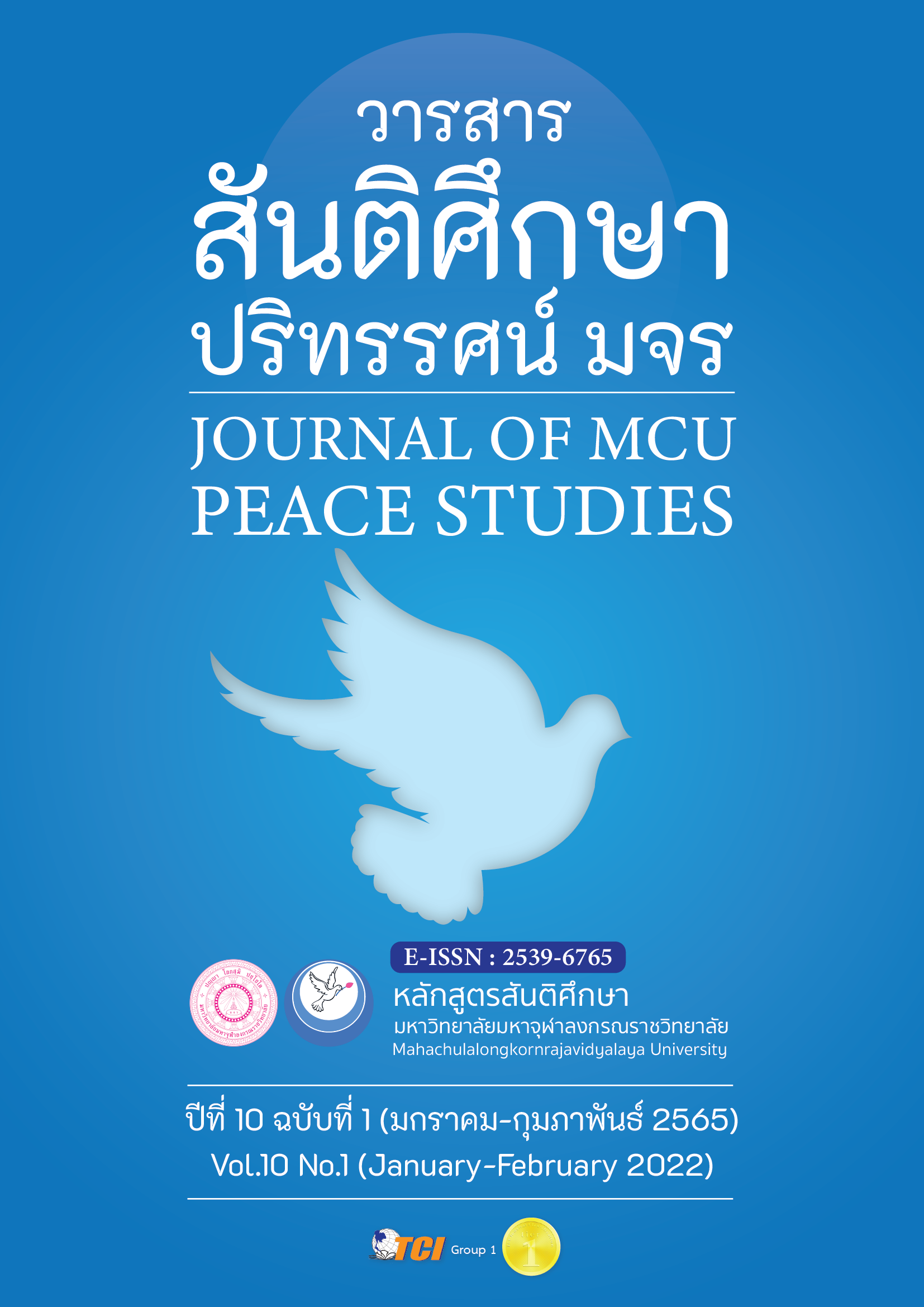Animation Media Development: Myths and Beliefs of Poy Sang Long Buddhist Ordination by Thai Yai Ethnicity in Mae Hong Son Province
Main Article Content
บทคัดย่อ
The objectives of this study were 1) to develop animation media to present the legends and beliefs inherited in the Poy Sang Long tradition and 2) to study the satisfaction of those who used animation media about legends and beliefs of Poy Sang Long tradition. The data collection instrument was a questionnaire. The researcher divided the question into three sections: part1, personal information of respondents; part 2, satisfaction in using animated media about the legends and beliefs of Poy Sang Long tradition and part 3, benefits and feedback to animated media about legends and beliefs of Poy Sang Long tradition.
The results showed that 1) This media development was done using 2.5D or a 2D animation technique with three depths. The effect of media usage on cognitive achievement could be achieved by positive reinforcement objectives. Users interacted with the media and would like to learn information on their own and also extend the learning to the content development model in learning cultural traditions. 2) Students, professionals, and people in the community had a high level of satisfaction with using animated media to present stories, legends, and beliefs inherited from Poy Sang Long tradition ( = 4.26 S.D = 0.68). The quality of the animated media was assessed using the Poy Sang Long AR presentation of the stories, legends, and beliefs of Poy Sang Long tradition. It was found that the subjects could understand their local customs, resulting in pride in local culture and traditions. In addition, these media helped to preserve and carry on the cultural identity of the Tai Yai ethnic group in Mae Hong Son Province.
Article Details

อนุญาตภายใต้เงื่อนไข Creative Commons Attribution-NonCommercial-NoDerivatives 4.0 International License.
ทัศนะและความคิดเห็นที่ปรากฏในบทความในวารสาร ถือเป็นความรับผิดชอบของผู้เขียนบทความนั้น และไม่ถือเป็นทัศนะและความรับผิดชอบของกองบรรณาธิการ ยินยอมว่าบทความเป็นลิขสิทธิ์ของวารสาร
เอกสารอ้างอิง
Lan Na Tai Ethnics Learning Center, Social Research Institute, Chiang Mai University. (2020). Tai Yai. Retrieved May 10, 2020, from http://www.sri.cmu.ac.th/~lelc/index.php/2015-11-18-16-02-19.
Lukrak, S., & Singjaichuen, A. (2020). Mixed Media and Animation Design for Promoting Nan’s Forest Conservation. Designeco, 1(1), 36-44.
Purwaningsih, A. (2017). Optimizing 2D Animation Production Time in Creating Traditional Watercolor Looks by Integrating Traditional and Digital Media. International Journal of Asia Digital Art & Design, 21(1-8), 57-63.
Rungtawan, U. (2020). Ethnography Research Database: Look at the people of Tai Sang Long. Retrieved May 10, 2020, from http://www.sac.or.th/databases/ethnicredb/articles_detail.php?id=1177.
Sanguan, C. (1969). Northern Thai traditions. Bangkok: Odeon Store.
Somnuek, P. (2003). Educational Evaluation. Kalasin: Prasan Printing.
Sriratanaban, T. (2019). Poy Sang Long: Social Symbols and Meaning of Tai Yai in Mae Hong Son Province. Journal of Thai Studies, 11(2), 87-112.
Tai Yai Institute. (2020). Tai Yai.Retrieved May 10, 2020, from http://www.taiyai.org/2011/index.php?page=4c2378500328311c7354592d47cc700d&r=3&id=52.
Thirawut, E. (2007). Measurement of attitude. Ubon Ratchathani: Witthaya Offset Printing House.
Waro, P. (2008). Research Methodology. Bangkok: Suweeriyasan.


